Driving sales
Classic car owners love their wheels, and they gladly open their wallets for professional photos of their prized possessions.
• April 2016 issue
Alison Miniter’s successful sideline
After a long hiatus from professional photography, Alison Miniter, M.Photog.Cr., CPP, wanted back in the game. Having attended photography school in the 1980s, she worked in photography for a number of years before leaving her career to raise her children. By the mid-2000s, with four kids who no longer needed her full-time attention, Miniter was ready to return. But how? And in what capacity? As often happens, personal and professional interests combined to provide the answers.
Photography had changed dramatically since Miniter’s departure, with digital imaging, Photoshop, online tools, and many other technical advancements that revolutionized the industry. Miniter immersed herself in education, taking classes on digital photography, lighting, and post-production. She joined PPA and the New Hampshire PPA, networked with peers, attended business seminars, and brainstormed how her skill set could fit into the new era of photography. For two years she honed her skills and looked for her niche. Then she had an inspiration.
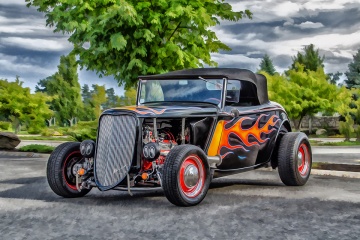
Breaking rules
Miniter’s husband is an automobile aficionado who enjoys attending car shows around New England. Thinking back on all the shows they’d attended as a family, Miniter saw an opportunity to provide custom photography to the car show audience. She started working on a product line, beginning with small, modest print products while she eased her way into the field. “These cars really are works of art,” she says. “So much work goes into them, and there’s a lot to showcase about them. It seemed like a market that could use a service like this.”
Miniter set up a product menu that included prints, canvases, and metal prints. She secured vendor space at a few car shows and started offering commissioned artwork. Word spread, with her first few commissions leading to a few more and those to a few more. Within the first year Miniter had developed a strong word-of-mouth referral base among automobile enthusiasts who want custom artwork of their four-wheeled pride and joy.
Most clients come to Miniter at car shows and set up an appointment to have their vehicle photographed. Miniter does some sessions onsite at the events, though she prefers to schedule a separate appointment so she can control the background and other elements. She shoots exclusively in available light, emphasizing the sky as a key part of every composition. Post-production is where the magic happens, with Miniter applying a blend of Photoshop techniques and plug-ins from Nik, Topaz, and Alien Skin. The results are highly stylized images with bright, painterly looks.
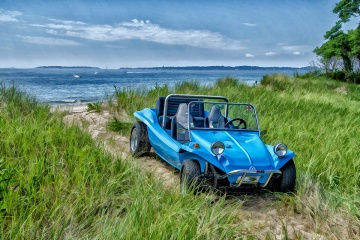
“My clients usually leave the artistic side up to me,” says Miniter. “I get a feeling for what they want and how they plan to display it, and then I shoot it for that type of output. A lot of my clients have never seen anything like this before. They’re not sure if it’s a drawing or a rendering or a photograph. They might be a little confused at first but most are intrigued.”
Miniter admits that she breaks a lot of photographic rules out of necessity; sometimes it’s not possible to stage a shoot in ideal light with an ideal background and sky. She may have to photograph at high noon or in a crowded parking lot with telephone wires crisscrossing the background against a bright, blown-out sky. So she shoots in raw and adjusts in post-production, where she’s able to produce a consistent look across her collection.
Consistency counts
Miniter’s consistency helps convince clients who sometimes need persuasion. “Selling art to people at a car show isn’t always an easy sale,” she admits. “A lot of these guys have built these cars from the ground up, and they have documented it at every stage with their own photos. So they’re not sure why they would pay for a professional photograph of the car. Often, it takes one of their friends bringing them to my booth to see the artwork, and then they get it.”
Miniter finds that many of her clients are as interested in how she makes the images as they are in the final artwork. “A lot of people aren’t necessarily looking at these images like art,” she explains. “They think of these cars as machines, mechanical things, not necessarily something that is pretty. They are more mechanically inclined and very interested in how things work, the process. So they’ll ask a lot of questions about how I make the images, and that’s how I engage some people at these shows.”
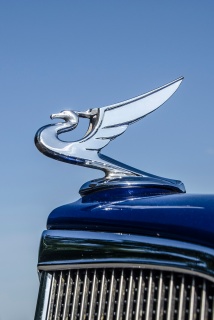
Miniter’s husband, a bona fide “car guy,” also helps by talking shop with prospective clients. He attends shows with Miniter and serves as her liaison to the car folk, often roaming the event, speaking with interested parties, and making introductions to the artist when appropriate. “It’s a team effort, really,” says Miniter. “While I’m shooting, he’s out talking to
people. These guys love talking about their cars. It helps having someone who can talk the talk.”
About three years into her custom car photography, Miniter has seen steady growth spurred by a diligent commitment to the marketplace. In addition to the “car guys” who want car portraits, there are plenty of wives and girlfriends looking for a gift for their significant other. On average, she gets about 10 to 12 new leads per show and generates almost all her referrals by word of mouth. Miniter is now well known in New England and is considering branching out to bigger, higher-end shows a little farther from home.
Big sellers have been metal prints, float frames, and, recently, larger prints. Her most popular size is 16x24 inches, though she frequently sells up to 20x30. “That’s about as large as my clients have been interested in buying,” she says. “Most of these prints are going to hang in someone’s garage or man cave, so it’s not like they’re buying an enormous wall portrait of their family for their living room.”
Sometimes Miniter photographs a car on spec just because she likes it. In some cases, she’ll make a custom license plate from the image and give it to the owner a couple weeks later. “Usually, when I do that for someone, he becomes my best friend and starts bringing everyone he knows over to my booth at the next show,” she says.
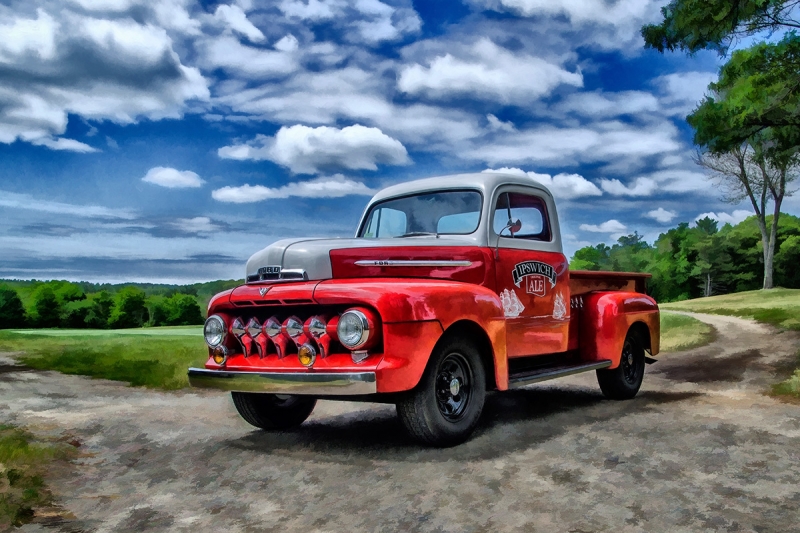
Miniter describes the car photography as a great sideline business in a largely untapped market. The keys to success, she says, are great networking, consistent output, and displaying enough variety so people can see different treatments and varied product options. “It’s a fun and interesting way to earn some extra income working with people who are very passionate about the subject matter,” she says.
Jeff Kent is the editor-at-large of Professional Photographer.

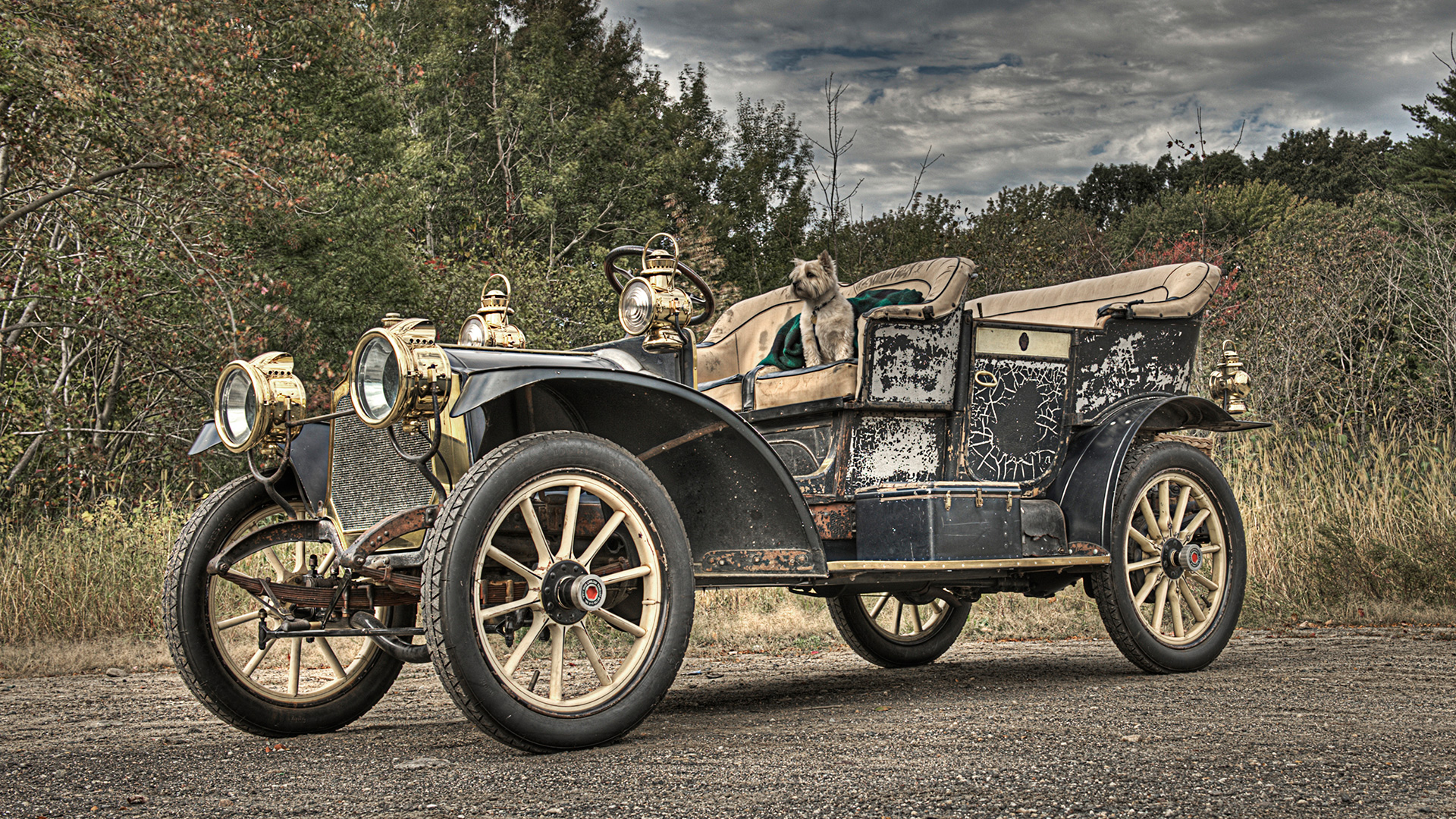
 View Gallery
View Gallery